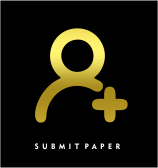Body Percussion Video: Rhythmic Learning for Elementary School Students
Abstract
Research discusses the benefits of learning rhythm for elementary school students through videos. During the Covid-19 pandemic, teachers are required to be creative in providing online learning. Teachers are required to be able to use various kinds of internet technology which must be used effectively and usefully for the implementation of the learning process properly. During the COVID-19 pandemic, online learning is mandatory for all schools in Indonesia. The purpose of this research is to examine in depth the benefits of video-based learning given to elementary school students. The research method used is qualitative with a description approach through literature studies. All data collected is then processed and analyzed by presenting, verifying and concluding data. The results of this study indicate that music learning can be done through videos. Rhythmic as one of the elements of music can have a positive impact on children. Rhythmic learning through body percussion does not limit students to improve their motor skills and musicality. They can easily do body percussion learning through videos because students don't have to bother looking for musical instruments because their own bodies are used as sound sources. The addition of musical accent symbols to body percussion games also has a positive influence on students' sensitivity and motor skills. Another benefit is that learning through video can be done flexibly for students, as well as increasing independence and self-confidence for students.
Keywords
Full Text:
PDFReferences
Don, C. (2001). Efek mozart bagi anak-anak : meningkatkan daya pikir, kesehatan, dan kreativitas anak melalui musik / Don Campbell (Alex tri Kantjono Widodo, ed.). Jakarta: Gramedia.
Habron, J. (2016). Dalcroze Eurhythmics in music therapy and special music education. Approaches: Music Therapy & Special Music Education, 8(2), 100–104.
Krisnawati, Sukmayadi, Y., & Supiarza, H. (2019). Music Activities in Islamic Boarding Schools. 1st International Conference on Arts and Design Education (ICADE 2018) Music, 255, 301–302. https://doi.org/10.2991/icade-18.2019.70
Malloch, S., & Trevarthen, C. (2018). The human nature of music. Frontiers in Psychology, 9(OCT), 1–21. https://doi.org/10.3389/fpsyg.2018.01680
Meikahani, R., Iswanto, A., Sukoco, P., & Mulyaningsih, F. (2022). Barriers in Learning Rhythmic Motion. Proceedings of the Conference on Interdisciplinary Approach in Sports in Conjunction with the 4th Yogyakarta International Seminar on Health, Physical Education, and Sport Science (COIS-YISHPESS 2021), 43, 90–94. https://doi.org/10.2991/ahsr.k.220106.015
Oriana Tio Parahita Nainggolan. (2015). Peranan Metode Eurhythmics Terhadap Peningkatan Kreativitas Gerak. Resital, 16(3), 117–124.
Romero-Naranjo, A. A., Jauset-Berrocal, J. A., Romero-Naranjo, F. J., & Liendo-Cárdenas, A. (2014). Therapeutic Benefits of Body Percussion Using the BAPNE Method. Procedia - Social and Behavioral Sciences, 152, 1171–1177. https://doi.org/10.1016/j.sbspro.2014.09.295
Romero-naranjo, F. J., Sayago-martínez, R., Jiménez-molina, J. B., Francisco, A., & Romero-naranjo, F. J. (2022). Pilot Study of the Assessment of Anxiety and Attention through Body Percussion and Neuromotricity in Secondary School Students in Physical Education , Music and Visual Arts classes . Pilot Study of the Assessment of Anxiety and Attention through Body Perc. Retos, 47(November), 573–588.
Shayan, N., AhmadiGatab, T., Jeloudar, J. G., & Ahangar, K. S. (2011). The effect of playing music on the confidence level. Procedia - Social and Behavioral Sciences, 30, 2061–2063. https://doi.org/10.1016/j.sbspro.2011.10.400
Supiarza, H. (2022). Fungsi Musik di Dalam Film : Pertemuan Seni Visual dan Aural Functions of Music in Film : The Meeting of Visual and Aural Arts. Cinematology: Journal Anthology of Film and Television Studies, 2(1), 78–87.
Wilson, S. J. (2013). The benefits of music for the brain. Session Q Conference Article, 140–148.
DOI: https://doi.org/10.17509/ftv-upi.v2i3.55252
Copyright (c) 2023 Universitas Pendidikan Indonesia

This work is licensed under a Creative Commons Attribution-ShareAlike 4.0 International License.
P-ISSN 2797-7099
E-ISSN 2797-9903
Address:
Program Studi Film Dan Televisi, Fakultas Pendidikan Seni Dan Desain, Universitas Pendidikan Indonesia. Gedung FPSD - Jl. Dr. Setiabudi No.229, Isola, Kec. Sukasari, Kota Bandung, Jawa Barat 40154, Bandung, Provinsi Jawa Barat. (022)200-9198. ftv_fpsd@upi.edu

Cinematology: Journal Antology of film and television studies is licensed under a Creative Commons Attribution-ShareAlike 4.0 International License




















